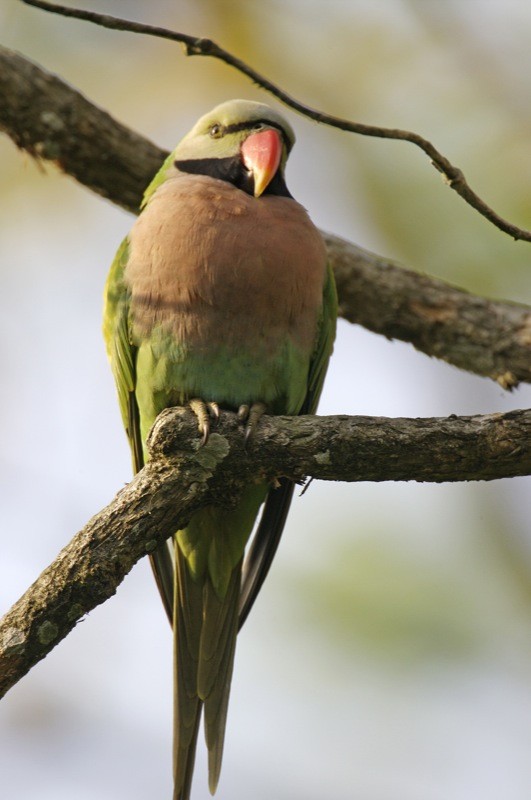Red-breasted Parakeet
A species of Ring-necked Parakeets Scientific name : Psittacula alexandri Genus : Ring-necked Parakeets
Red-breasted Parakeet, A species of Ring-necked Parakeets
Botanical name: Psittacula alexandri
Genus: Ring-necked Parakeets
Content
Description People often ask General Info
 Photo By Lip Kee Yap , used under CC-BY-SA-2.0 /Cropped and compressed from original
Photo By Lip Kee Yap , used under CC-BY-SA-2.0 /Cropped and compressed from original Description
The red-breasted parakeet (Psittacula alexandri) is among the more widespread species of the genus and is the species which has the most geographical variations. It is easily identified by the large red patch on its breast. An alternative name is the moustached parakeet depending on subspecies. Most of the subspecies are confined to minuscule islands or a cluster of islands in Indonesia. One subspecies occurs in the Andaman islands, and one subspecies occurs in continental Southeast Asia and partly extending to northeastern parts of South Asia along the foothills of the Himalayas. Some of the island races may be threatened by the wild bird trade. The nominate race, which occurs in Java, is close to extinction. Feral populations of this species have now established themselves in cities like Mumbai and small numbers occur in other cities such as Chennai and Bangalore in India. The scientific specific name commemorates Alexander the Great whose armies brought eastern parakeets to Greece. It was the first eponym in scientific avian nomenclature in its original form of Psittacus alexandri Linnaeus, 1758. 
Size
38 cm
Colors
Black
Green
Yellow
Red
Gray
Life Expectancy
20 years
Nest Placement
Cavity
Feeding Habits
Red-breasted Parakeet primarily consumes wild and cultivated fruits, berries, nectar, nuts, seeds, and also feeds on leaves, cereal grains like rice and maize. It forages among trees and shrubbery, often in groups, showcasing a flexible and versatile diet.
Habitat
Red-breasted Parakeet typically inhabits a diverse range of subtropical and tropical environments. These birds are found in moist deciduous forests, secondary growth areas, and mangroves. They are also common in cultivated landscapes, such as teak and coconut plantations, woodlands near cultivation, and human settlements, especially in foothill and lowland regions. Red-breasted Parakeet tend to steer clear of dense evergreen closed-canopy forests, favoring more open spaces like parks and gardens.
Dite type
Herbivorous
People often ask
General Info
Feeding Habits
Bird food type
Species Status
Not globally threatened.
Scientific Classification
Phylum
Chordates Class
Birds Order
Parrots Family
Parrots Genus
Ring-necked Parakeets Species
Red-breasted Parakeet